The Highest Mountain in The Giant Mountains and the Sudetes
The beauty and shades of blue of Poland's Karkonosze National Park during Winter 2019.
A magic trip to the Giant Mountains
Wild flake whirl welcomes us at the arrival at our hut. On the Polish side at the foot of the Giant Mountains. The clear, cold winter air announces an icy winter night.
The fire blazes and crackles in the fireplace while we plan our routes for our winter hike through the woods and to the peaks of the Giant Mountains. What an enchanting ecosystem awaits us we couldn't imagine yet.
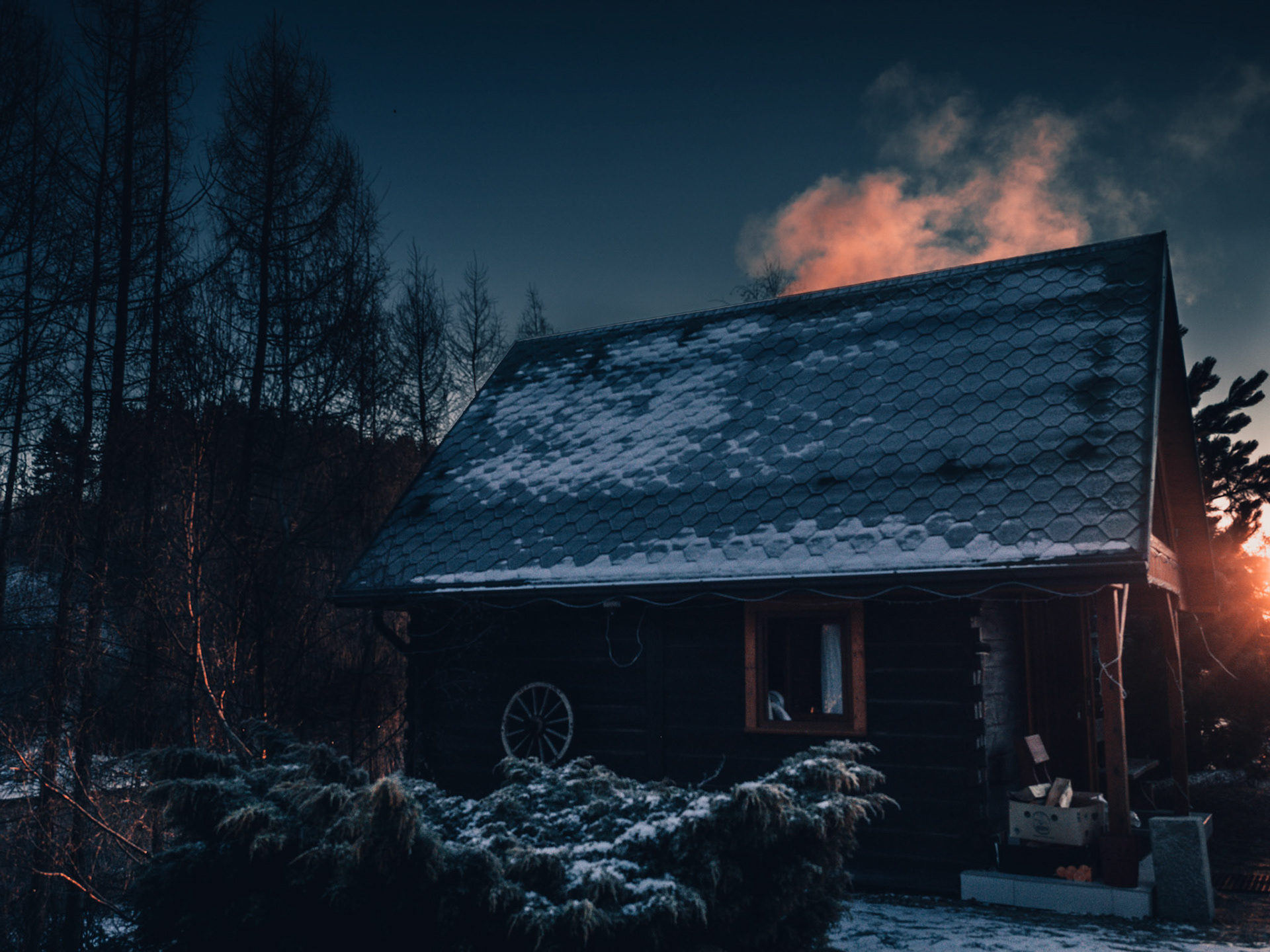
the cabin

early morning view
The Giant Mountains extend on the border between the Polish Lower Silesia and the Czech Republic and reach a height of 1602 m in the Schneekoppe. With its subalpine character, glacial glaciers, mountain lakes and the steep rocky flanks of the mountains, it is a wonderful nature experience.
On both the Polish and Czech sides, large parts of the Giant Mountains are protected as a national park.
The 56 km² Karkonoski Park Narodowy (KPN, Krkonoše National Park) has been a Polish national park since 1959. It mainly includes the sensitive high and peak slopes of the mountains from about 900-1000 m altitude and some special nature reserves below this zone.
After the Polish National Park, the Krkonošský národní park (KRNAP) was established in 1963 as the first national park in the Czech Republic. Its area is approximately 370 km². Not only the subalpine ridges are protected, but also the areas up to the foot of the mountains.
The very strict nature conservation regulations of the Polish National Park do not permit artificial reforestation of the mountain areas affected by the forest dieback in the 1970s and 1980s. This is how the National Park is and may be itself. On the Czech side, on the other hand, reforestation is being carried out.
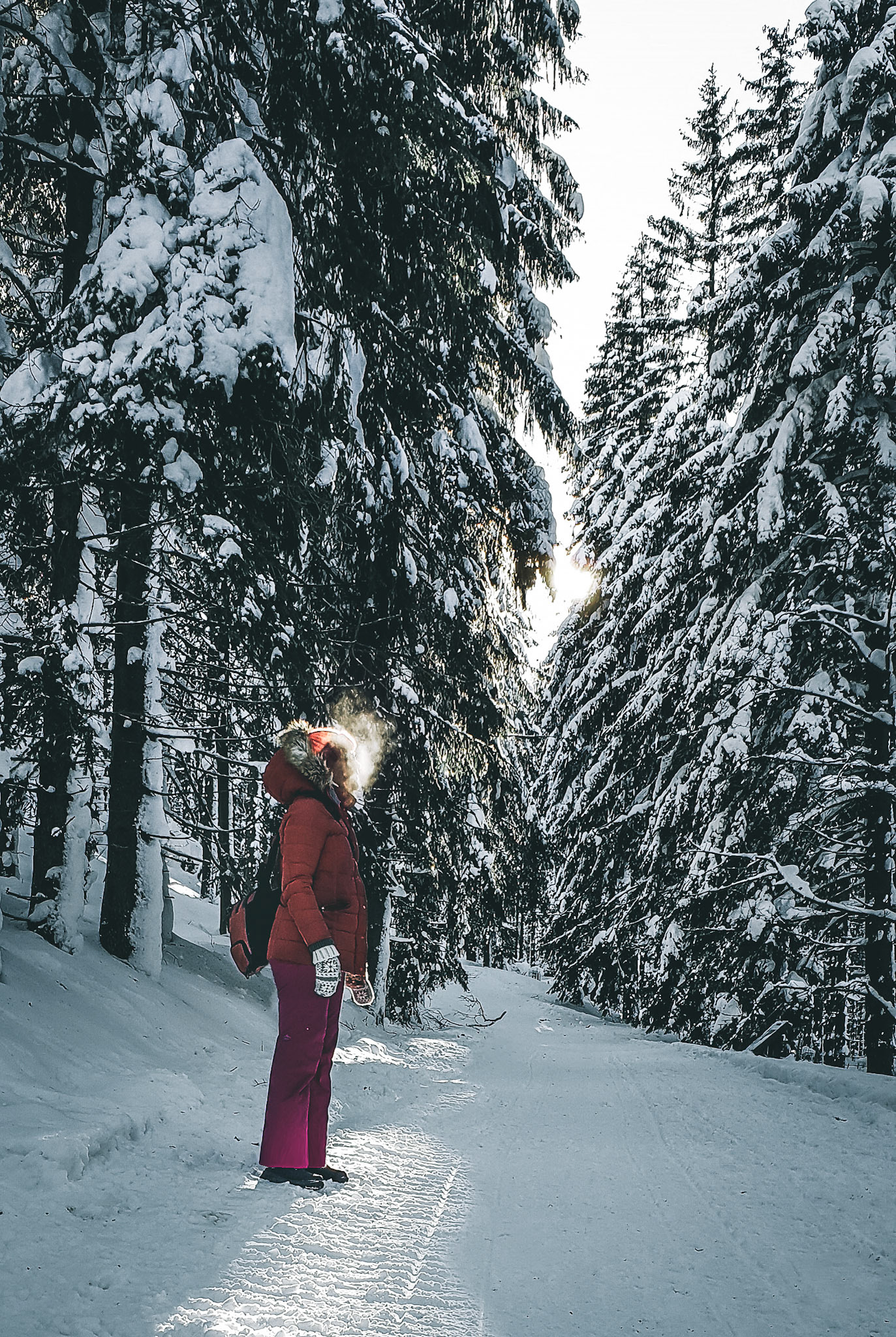
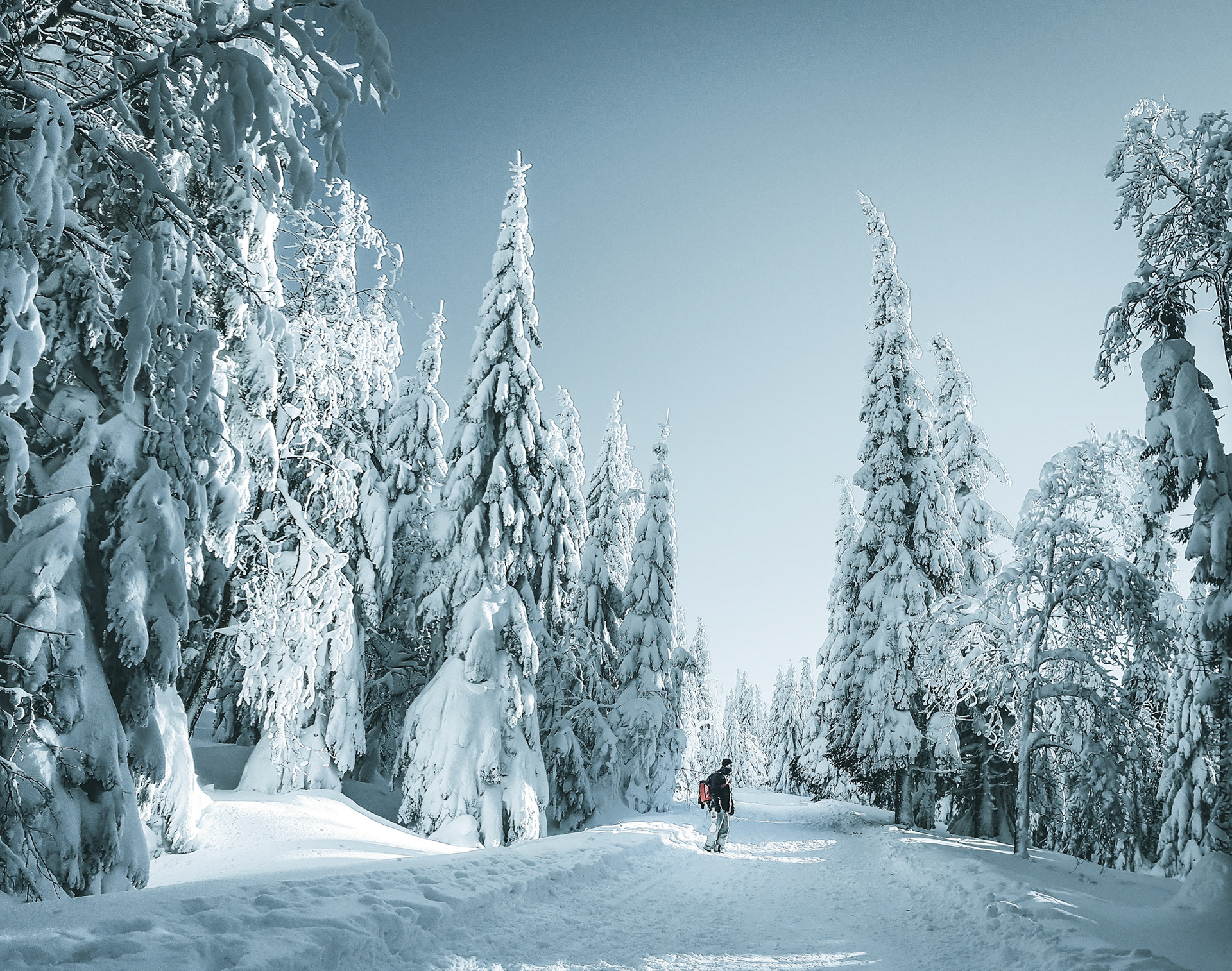
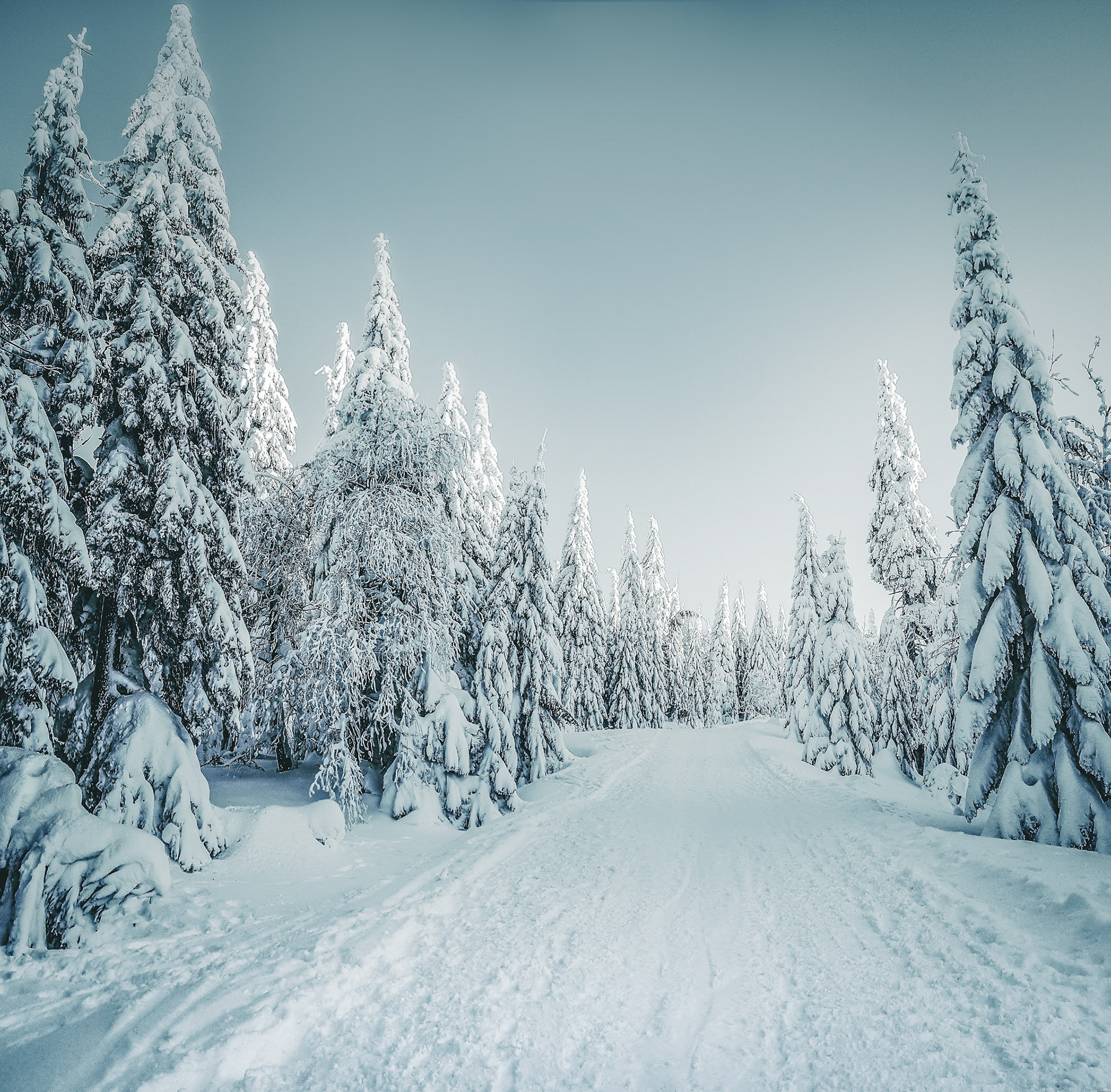
The next morning. I open the door of the still warm hut. The frost breath of my breath and the winter sky shows the 15 degrees minus immediately.
The colours in the sky mix. The still half dark ice-blue sky is soaked in a warm yellow. A soft blood orange announces the sun. A phenomenal beginning of the first morning.
It is freezing cold as we begin the first meters of our hike through the picturesque winter landscape in the middle of the forest. Surprised by the steep ascents, the snow-covered trees to the left and right of the trail are a real compensation.
The snow creaks with every step under our feet and except for the singing and foraging birds there is only a calming silence. This is exactly what we were looking for. A real balance to the hectic big city.
It doesn't always have to be the Alps or the Dolomites. That is already certain. We wanted to get to know the Polish side of the mountains in particular, as the majority of western visitors head for and explore the more popular Czech part.
At the edge in front of us lies an old beech tree. They have become rare and were almost extinct in this region and only slowly find their way back to the national park.
The beech forests have been replaced by a fast growing and easier to cultivate spruce. This is why the remaining beech forests of the Chojnik Mountains are so valuable. They are the remains of former natural forests.
At the same time, the remaining beech trees are a specific model for the reconstruction and regeneration of rebuilt stands.
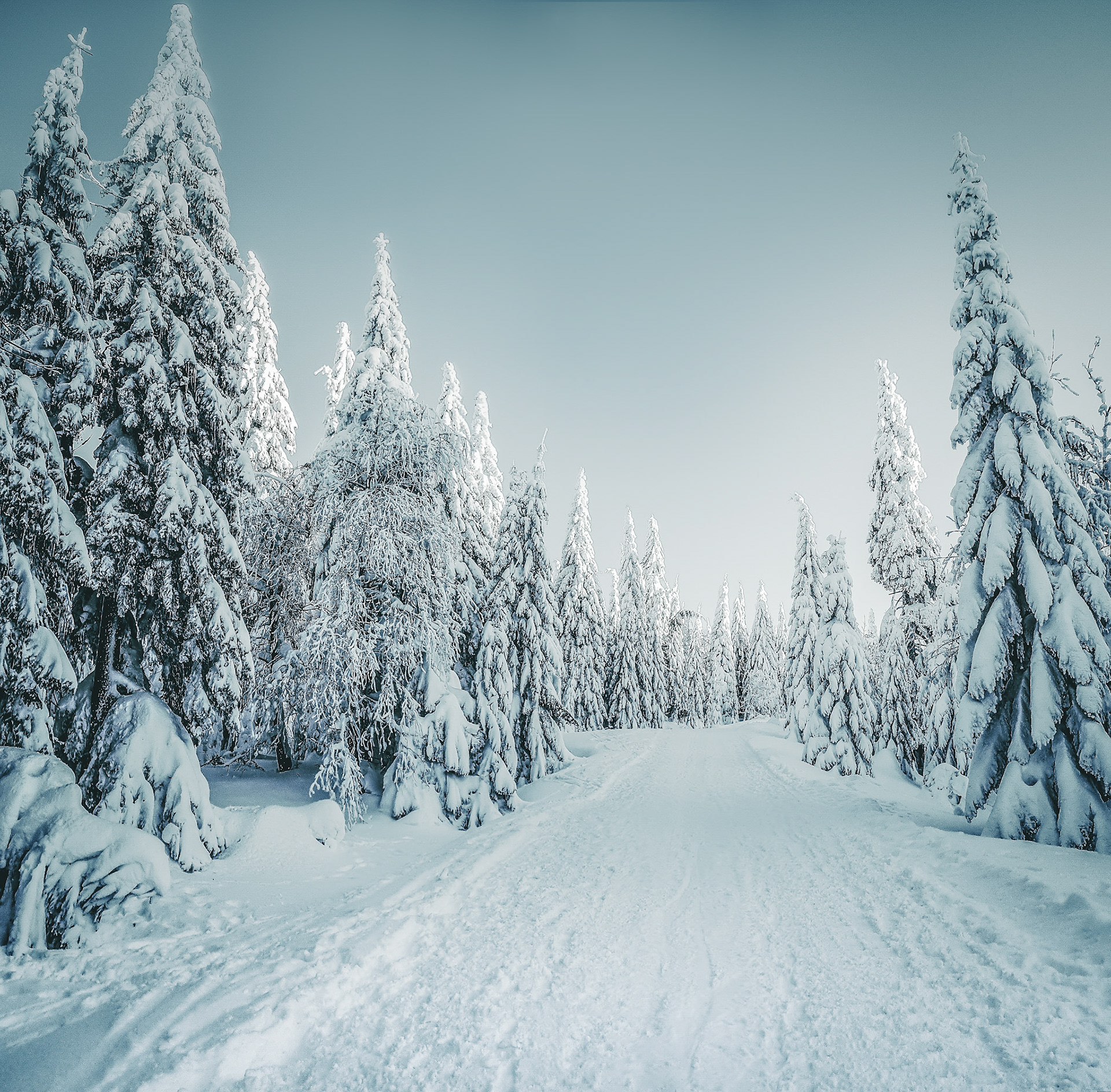
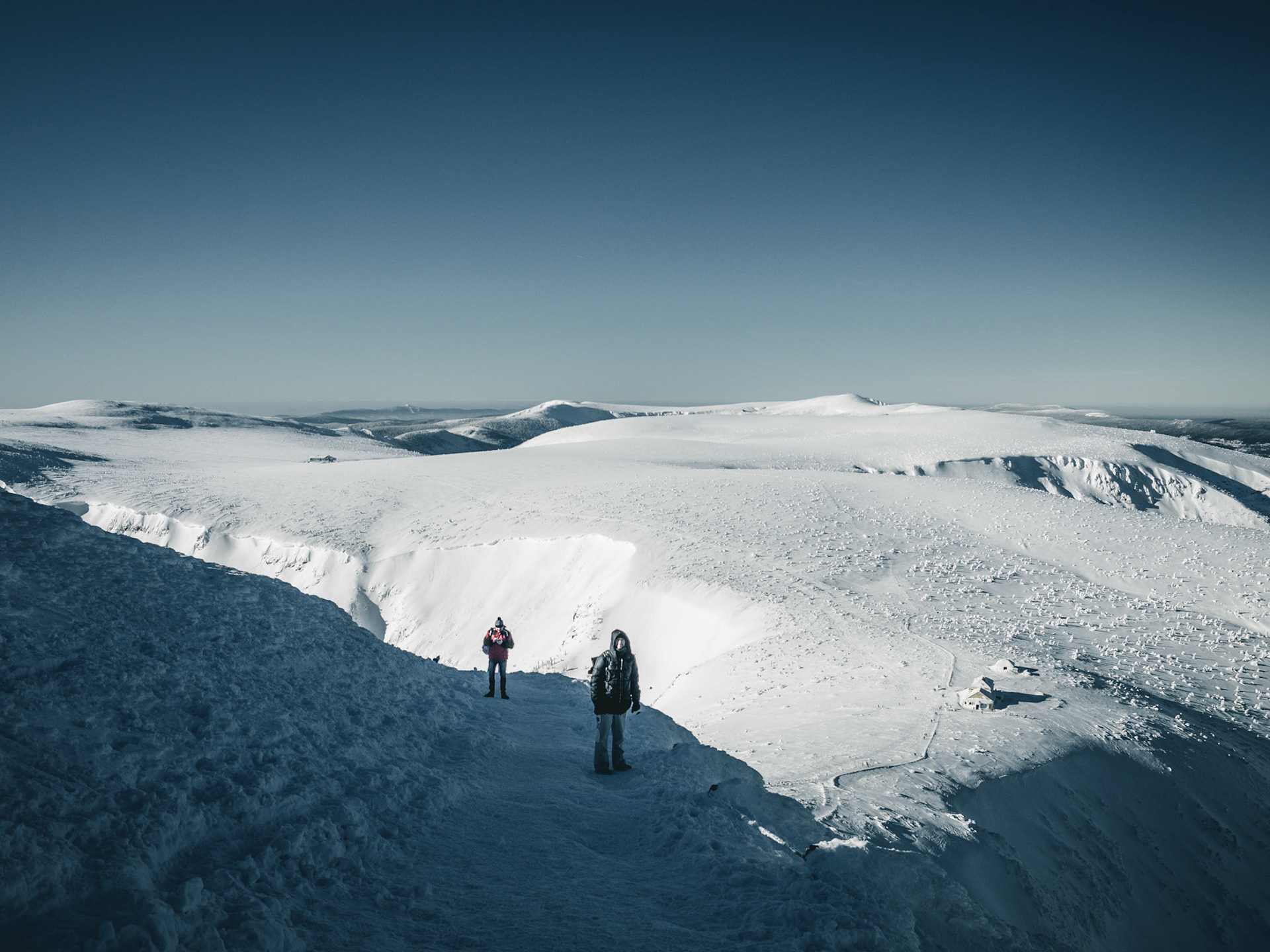
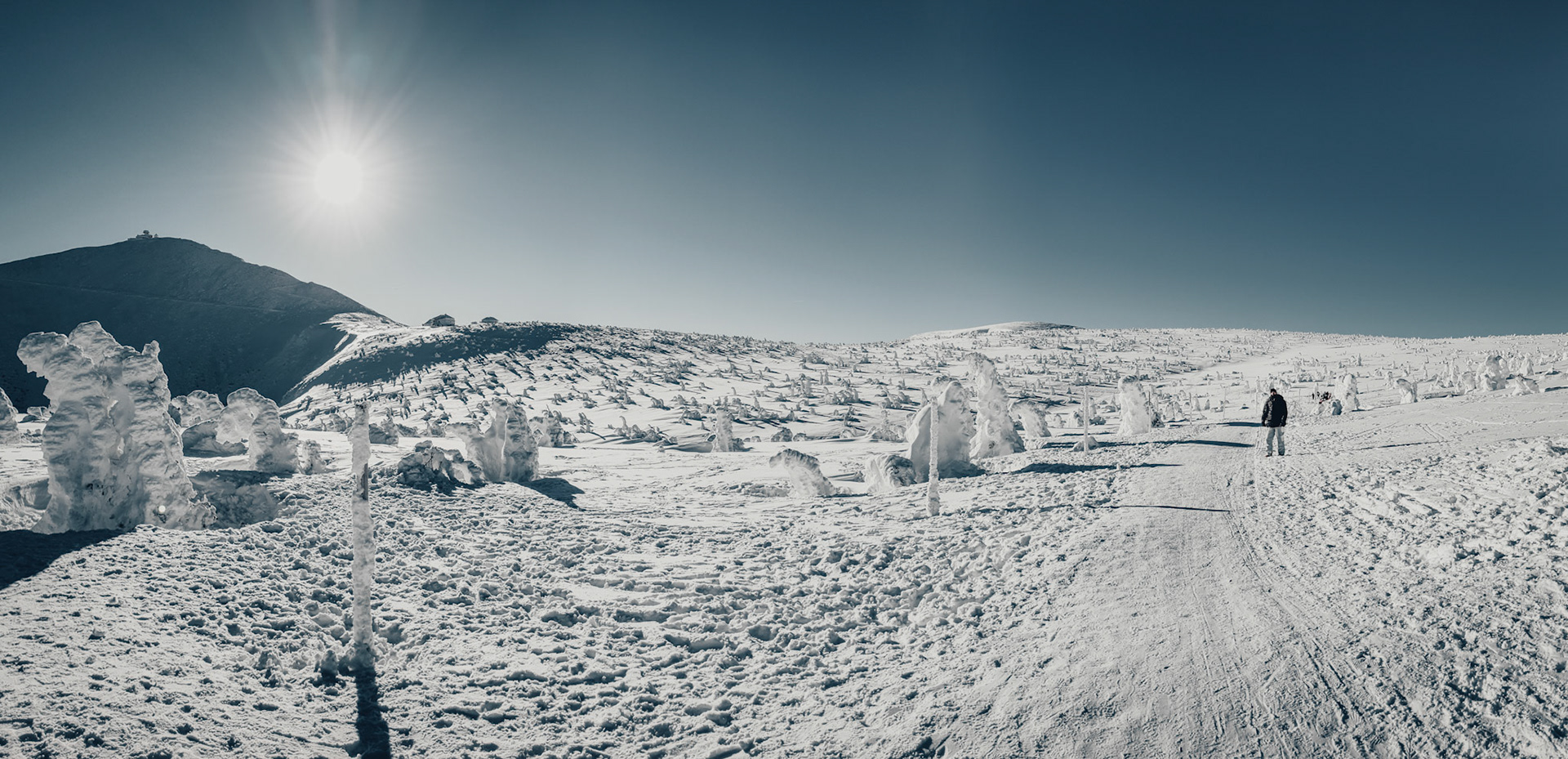
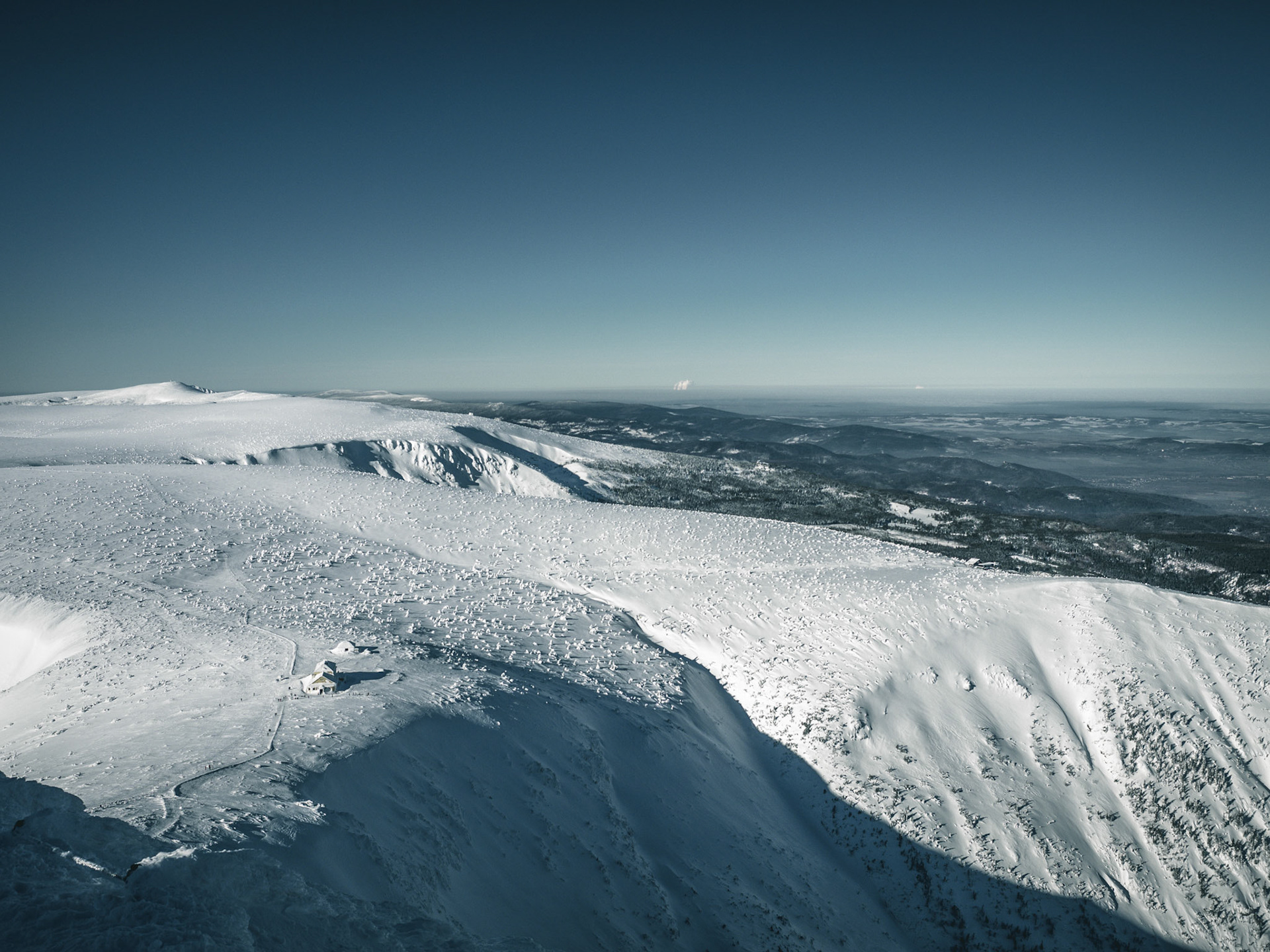
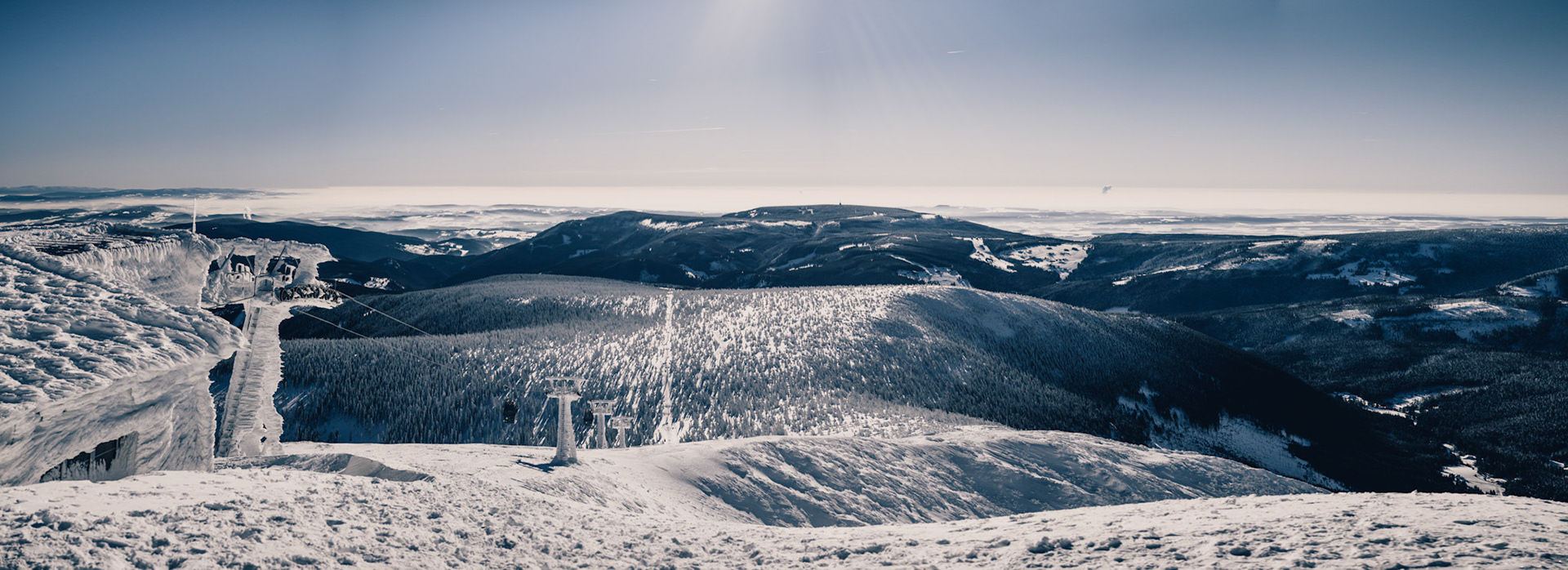


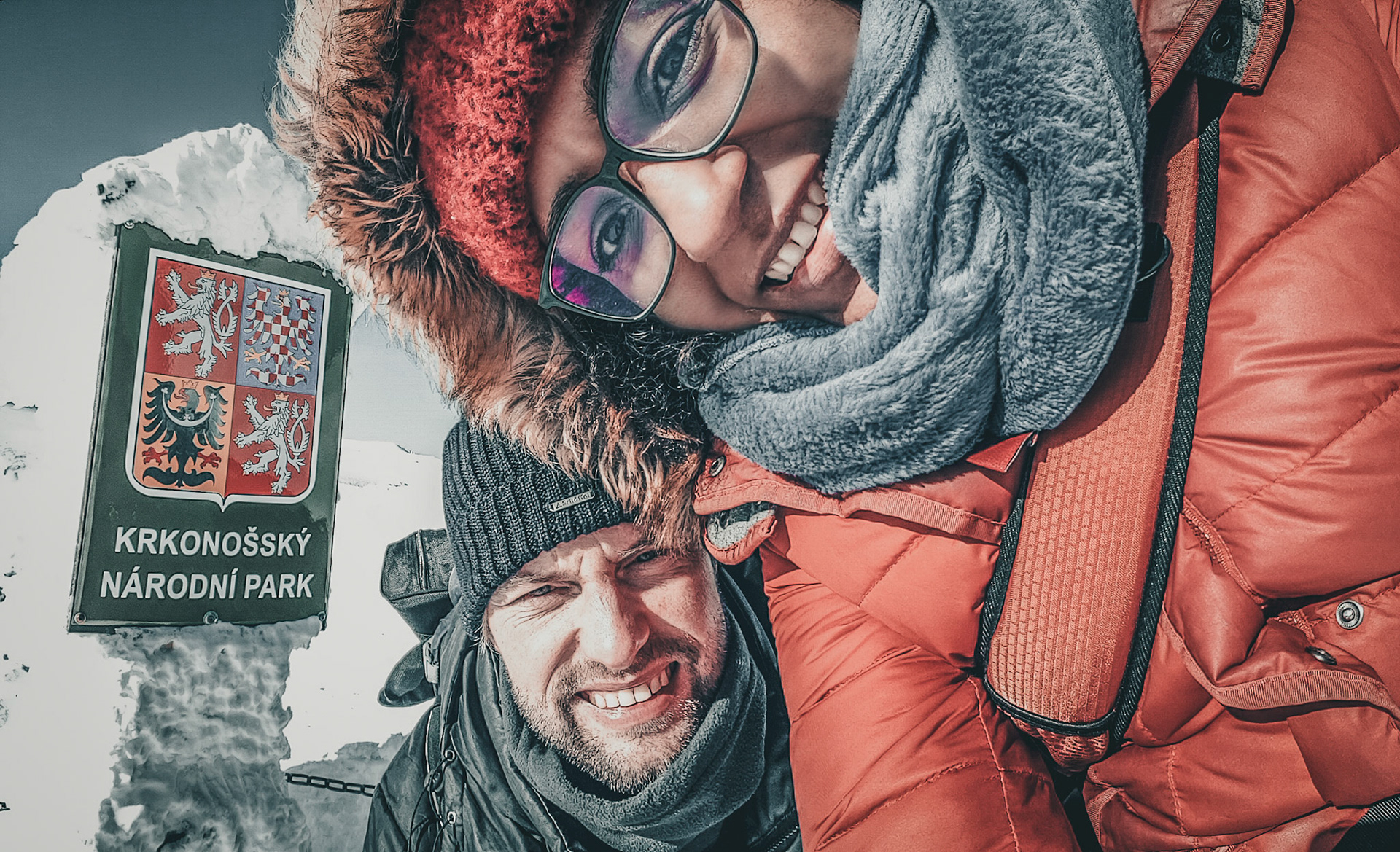
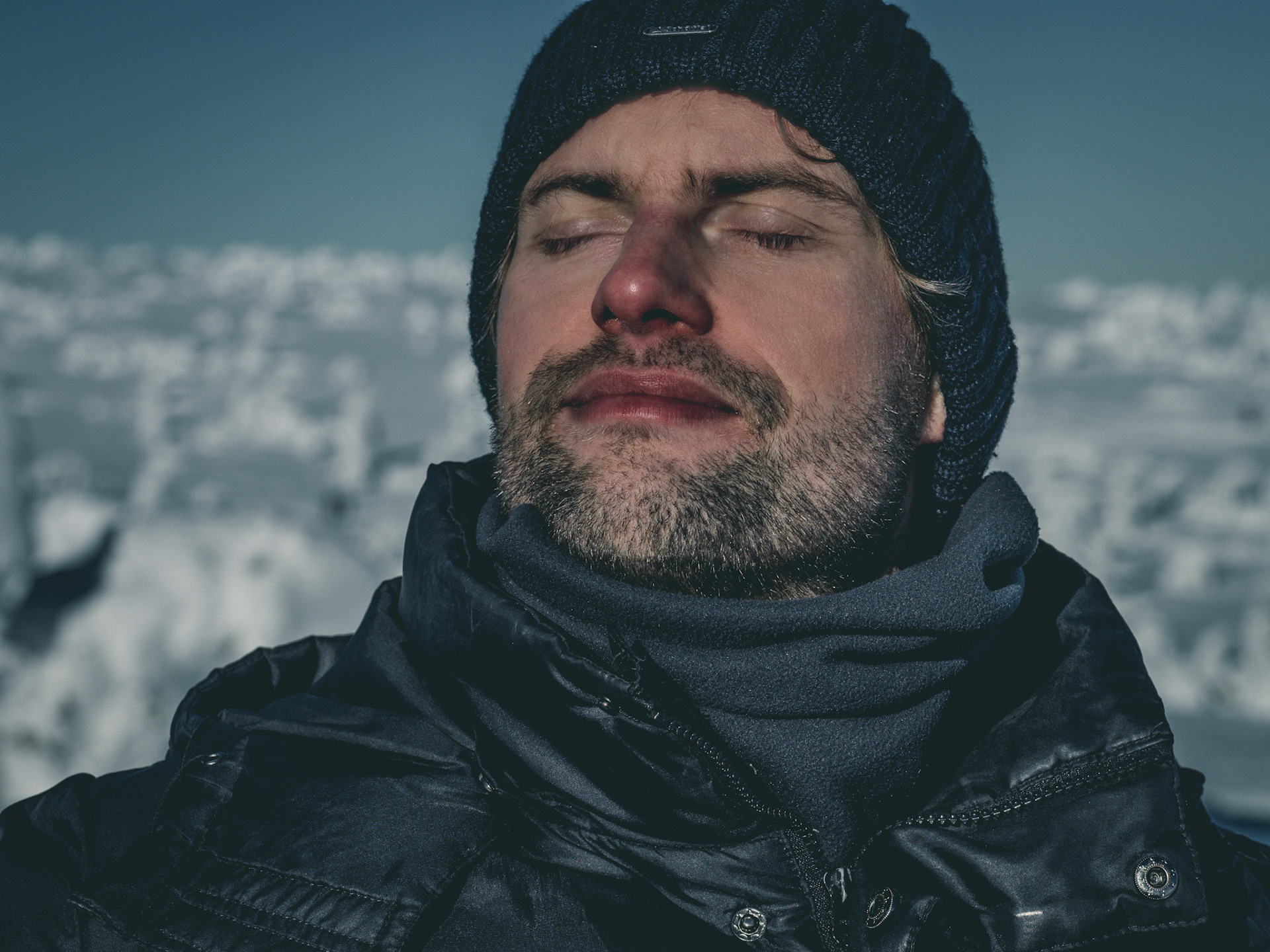
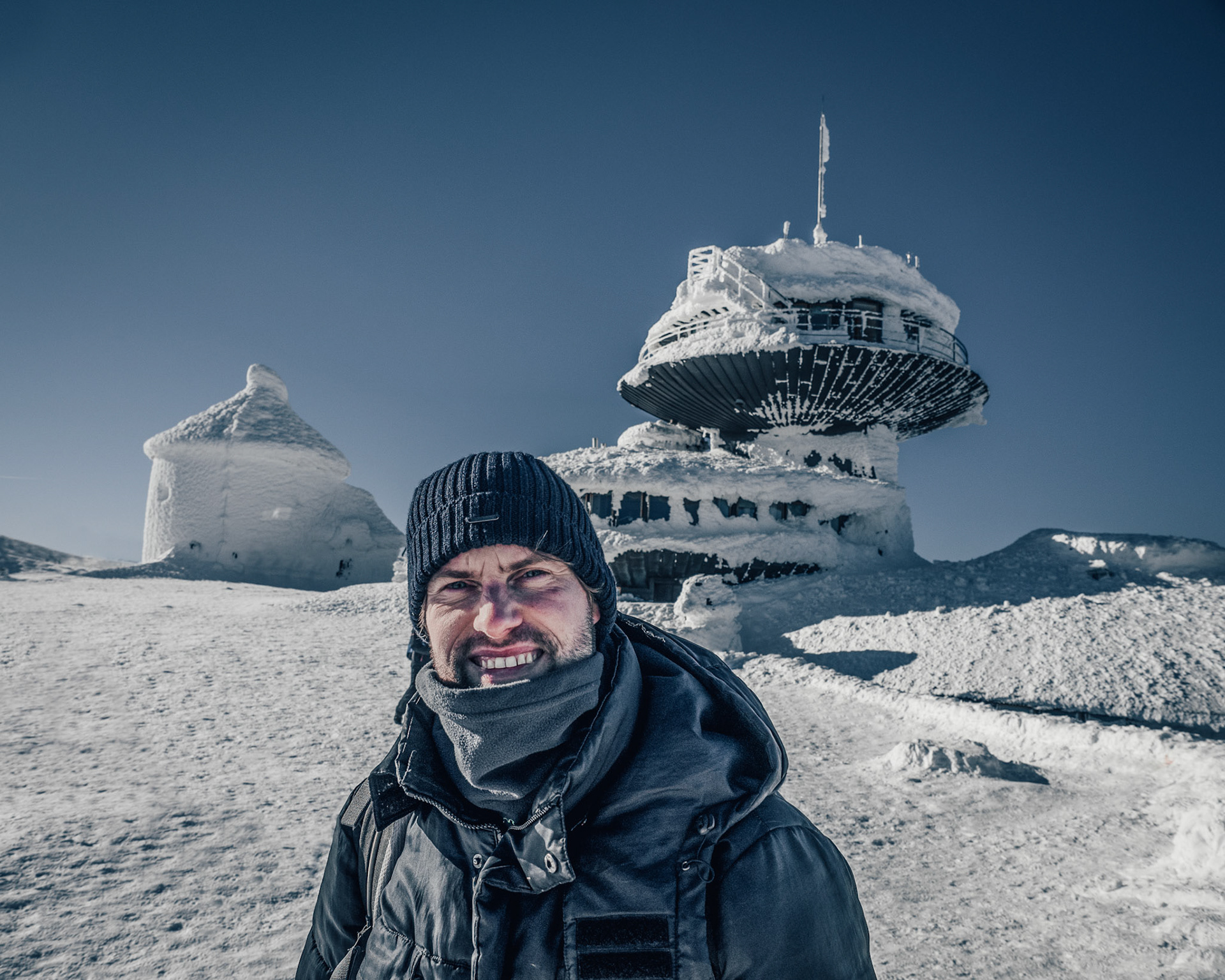
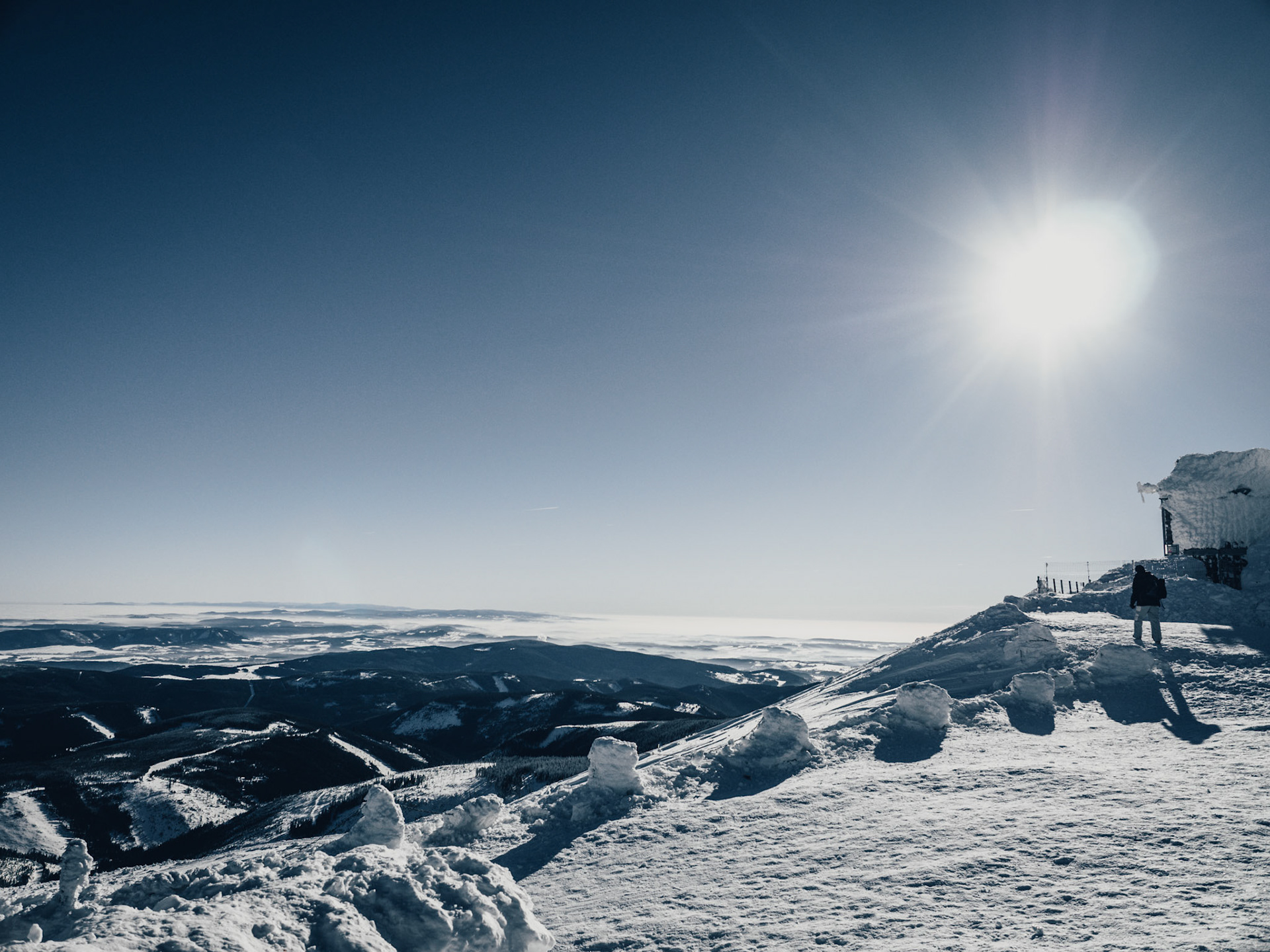
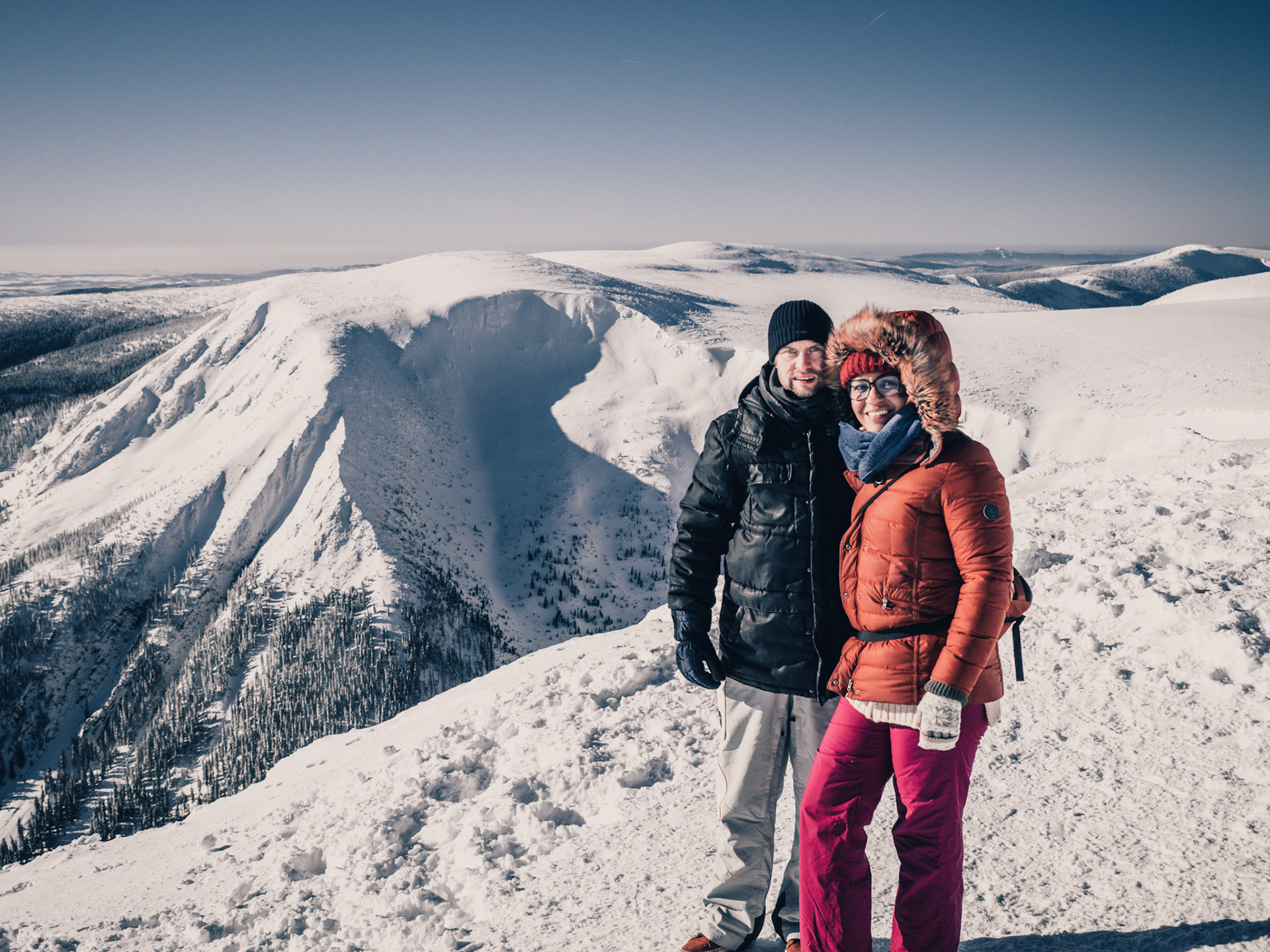
The higher we get, the more exposed the trees are to the icy and strong snowstorms. The enormous snow masses press enormously on the branches and let some trees turn into bizarre art sculptures. Twisted, twisted, strongly bent, they defy the heavy snow masses and winds to show off their beautiful, green glowing coats in summer.
Meanwhile arrived at the summit, we look at The play of colours of winter. Tired, but happy and content. Inhaling the clear but ice-cold air we feel the strength and the energy of this breathtaking nature.
But this nature is fragile due to human overexploitation and needs our help. It is all the more incomprehensible that people still leave plastic bottles and bags along the way.
This wonderful winter feeling makes it clear once again how valuable and beautiful it is. What would we be here without snow? That's why we should make every effort to stop global warming. Each of us can make a small contribution.
We need nature and now nature also needs us.
When we are most awake, most present in the moment, every sense of nature converges into a single energetic joy. It is as if there is a feeling passing between each living thing, a bond that is tangible and blended, a melody beyond the range of ears but available for the heart. And so, as each leaf moves in the wind, a part of us does also. It is the togetherness of what is separate, the glue in the universe.
We must protect and preserve these feelings.
When we leave the Giant Mountains it says goodbye with the same wonderful flake whirl as it received us. Thank you very much. We will come back and hopefully experience these great feelings again.